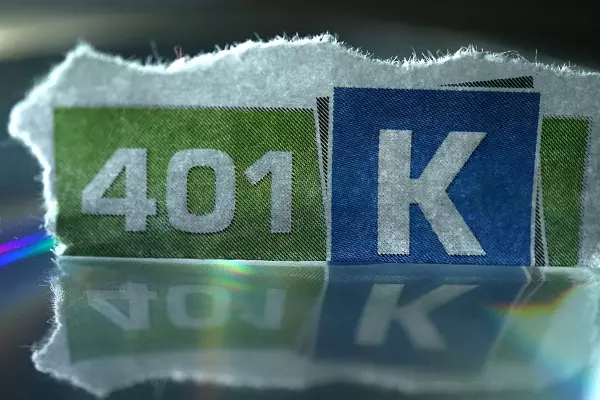Workshop | 2022-2023 State of the Union for Real Estate Investors & Entrepreneurs | September 21st @ 1:00 p.m. EDT
X

Choose an account type

What Is A Solo QRP 401K Plan, And What Are The Benefits?
August 19, 2021
Is this plan right for you if you’re a self-employed individual, or small business owner?
First let’s talk about who is eligible for the plan. Eligible people include small business owners:
- Who have no common law employees, or…
- Who can legitimize the 401k (which means make a first year’s contribution based on earnings).
How much are those contributions?
Talk to a CPA or your financial advisor to advise you on that. It is important to know that to legitimize the 401k means making a first year’s contribution.
If you’re eligible for the 401k, it gives you tremendous tax benefits. The fact that it’s a solo 401k or solo QRP puts the administration in your hands with checkbook control.
This is one of the big benefits to a solo QRP. However, this can be good or bad.
The good sides to this are:
- You get the checkbook
- You set up a bank account associated with your solo QRP
- The bank account is in the name of the solo QRP, but you write the checks
- You do the reporting.
These responsibilities can be good and bad.
If you have a bookkeeper that can handle those things for you, that can be a great idea.
In the end, it puts you in more control of your retirement assets.
Invest in Anything Except…
Now, when it comes to investing, the solo QRP allows you to invest in anything except collectibles.
There is a wide array of investments that you can make, including:
- Real Estate
- Promissory notes
- Small startup companies
- Cryptocurrency.
The investment options allowed in a solo QRP are almost endless.
Make Large Contributions
Other benefits with the solo QRP are the fact that you can make large contributions.
Now with any QRP or 401k, remember there are two sides – or two buckets – that you’re making contributions to:
- The employee bucket
- The employer bucket.
When you’re self-employed or small business owner, oftentimes you’re both. (You’re the owner and the employee.) With that understanding, you can make both sides of the contributions.
With your employee contribution (or your salary deferral) that can be up to $19,500.
You can choose to make those contributions either traditional or pre-tax, or you can make them after-tax Roth.
So, one of the coolest things with the solo QRP is the fact that you can make large Roth contributions, and it can be based on the first $19,500 you make on income to your company.
Now from the employer side, you can make a percentage of your income as a contribution. This means:
- If you’re paying yourself a salary from the company, you can make a contribution up to 25% of your income (not to exceed $58,000 in total).
- If you’re not paying yourself a salary, and you’re just receiving schedule C income or 1099 income, it’s roughly 20% of your income (not to exceed $58,000 in totality).
As you can see, you can make much larger contributions – and even make much larger Roth contributions – compared to contributing to an individual traditional IRA or an individual Roth IRA.
Take an Emergency Loan From the QRP
Another benefit to the QRP is that in the event of emergencies, you can take a loan from the QRP.
The amount can be up to $50,000 or 50% of the value of the QRP – whichever is less.
This is much different than an IRA. IRAs are prohibited from giving you a loan.
With a QRP, you can take a loan from the QRP and repay loan, based on prime interest over a certain amount of time.
You don’t have to pay unrelated debt-financed income tax
Another benefit to the QRP is that if you’re buying debt-leveraged property (those with loans, either property with financing or property that has existing financing) you don’t have to pay unrelated debt-financed income tax (UDFI tax).
In an IRA, this is typically called unrelated debt-financed income tax.
So to reiterate:
- Buying debt-leveraged property in a 401k: no tax.
- Buying debt-leveraged property in an IRA: taxed.
One of the benefits to having a solo QRP – if you’re eligible – is that added benefit to not having to pay UDFI when you’re buying debt leveraged property.
It’s Cheap!
The last benefit is that using a solo QRP is cheap. If you’re doing a lot of transactions (you’ve got a lot of activity with your retirement portfolio), a solo QRP with the administration in your hands eliminates much of the fees you’ll find with an IRA custodian that has to process all your transactions.
As a general rule of thumb with using a Solo QRP / 401K Plan:
- It’s cheap.
- You have much larger contribution limits and those contribution limits can be Roth.
- You have checkbook control, giving you the ability to write checks for your own investments.
- You have an exemption to UDFI, so you don’t have to pay that tax if you’re buying debt-leveraged property.
- And you can take a loan to yourself up to $50,000 or 50% of the value, whichever is less in the event of emergencies.
If you’re interested in finding out more or setting up a solo QRP / 401K, contact us. We’re here to help.
If this was helpful to you, make sure to stay connected with NuView Trust by doing the following:
- Subscribe to our YouTube channel.
- Follow us on Facebook.
- Contact us directly with questions or ideas at: IRAspecialists@nuviewtrust.com
We go live with education almost daily.
We love to provide investors the true story of what’s possible inside of an IRA, and possible inside of a 401k.
See you soon!

